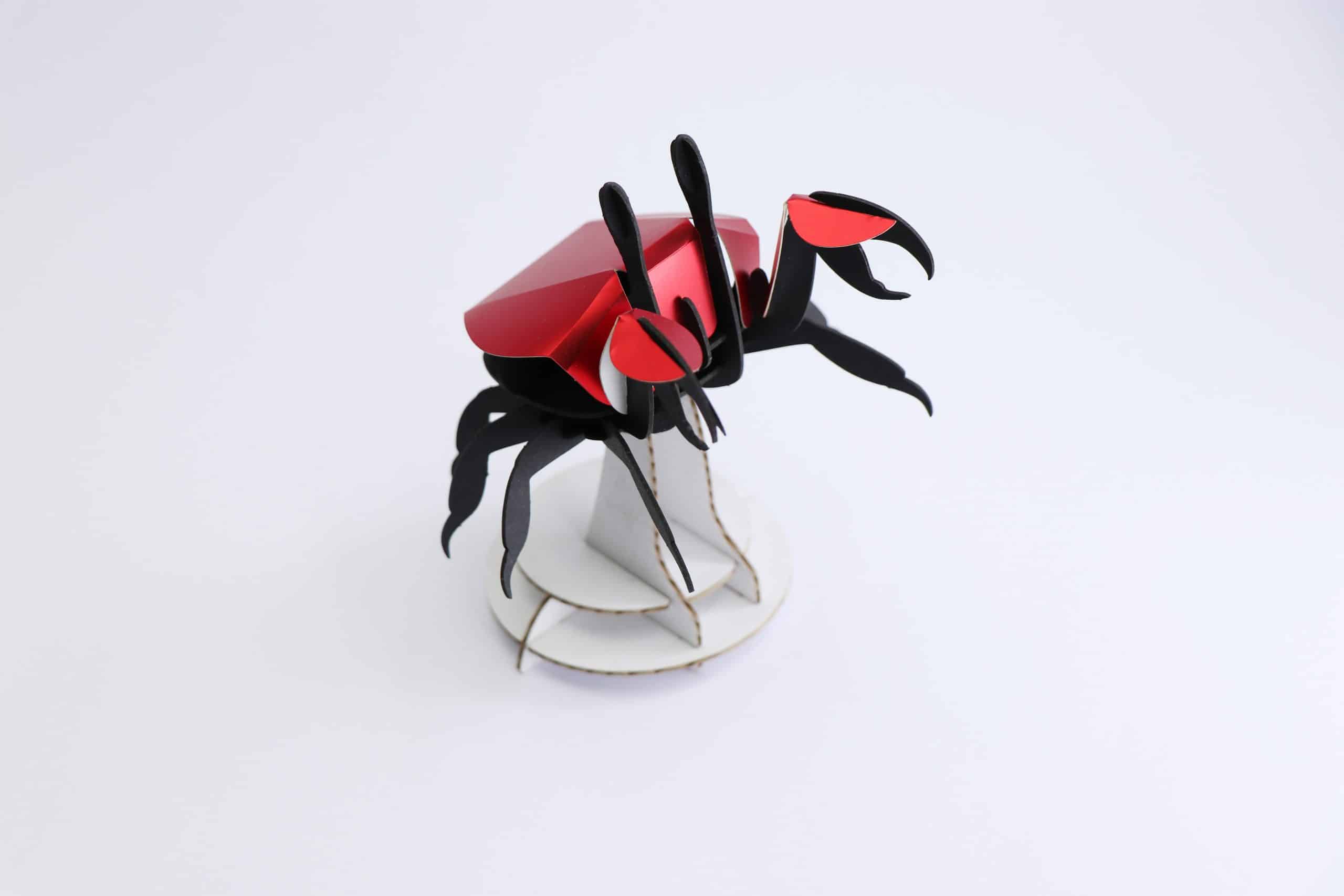The new collection of Assembli is available now! One of the newest family members is this 3D paper Crab!
Cut the Crab, literally this time! Beautifully designed, with ultimate precision and the best quality paper. Our in house designer created this cool creature for your interior. You can now take the Marine life into your home decoration in a very animal friendly way. All our paper creations are eco-friendly and so is this 3D paper Crab. Assembling this 3D paper Crab is like a mindful journey. The feeling of joy when you are ready with assembling this beautiful Crab is great!
The Beach Crab kit contains:
- 1 black template for the body.
- 1 red template for the shield.
- A paper stand.
- A sheet with clear instructions.
You don’t need any scissors or craft knife to assemble this paper Crab yourself!
After assembling you can add a few dots of glue to keep your Crab in the most perfect shape, but it is not necessary.
Crab facts:
The Scientific Name of the Crab is Brachyura. Brachyura literally means short tail. It refers to the tail of the crab, folded under the belly shield. Because the tail is folded under in this way, crabs don’t have a visible tail. You can recognize crabs by a body that is more wide than long and they have a hard armor. The eyes of a crab are on little ‘sticks’. These eyes are made out of hundreds of little lenses. The front pair of legs are sharp cutters like scissors. Crabs move sideways and have the ability to dive in sand super quickly.
There are more than 4500 species of crab worldwide. The largest crabs in the world are the Japanese spider crabs. They can grow as tall as 13 feet wide!
Female crabs lay millions of eggs at the same time. She carries them under her belly until they hatch. Crabs hatch from tiny larvae about the size of a pinhead. The lifespan of a small crab averages around 3-4 years, but larger species such as the giant Japanese spider crab can live as long as 100 years.
Crabs can be found in all oceans and in freshwater. Some crabs live on land, sometimes several miles from water. Species such as the fiddler crab live in burrows in the sand or mud, where they stay during winter and high tides. Others live within the shells of oysters or mussels. Most Crabs eat fish, shrimps, algae and worms.


